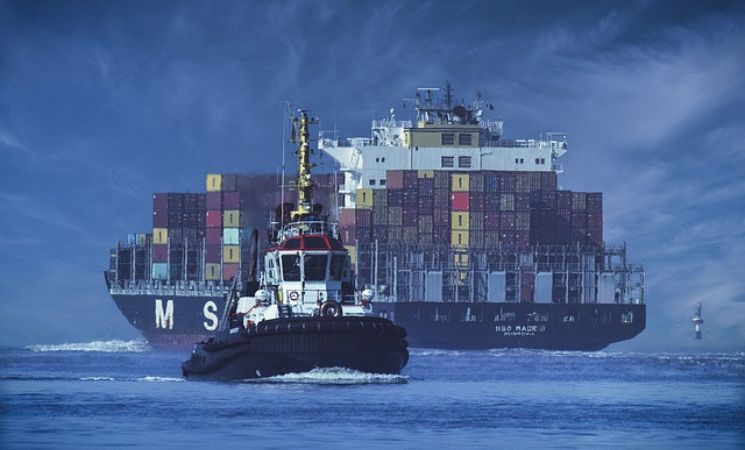In today’s fast-paced, tech-driven world, the shipping industry has become increasingly reliant on digital systems to move goods quickly and efficiently. From automated warehouses to real-time tracking, technology has revolutionized how businesses manage their logistics.
However, this digital transformation also brings new security challenges. Cyber threats, data breaches, and even physical theft are evolving alongside technological advancements, putting shipping security at the forefront of business concerns. So, how can companies safeguard their shipping operations in this digital age?
Let’s explore the key strategies for improving shipping security.
The Growing Threat of Cyberattacks
The shipping industry is no longer just about moving boxes; it’s about managing data. Every shipment generates a wealth of information—from the customer’s address to the exact route the package will take—and this data is a valuable target for cybercriminals.
Hackers can exploit vulnerabilities in shipping software, intercept sensitive information, or even disrupt entire logistics networks with ransomware attacks.
The consequences can be severe, leading to operational downtime, financial losses, and damaged reputations.
To combat these threats, businesses need to adopt robust cybersecurity measures. This includes encrypting sensitive data, using secure communication protocols, and regularly updating software to patch known vulnerabilities. Employee training is also critical; a well-informed team is the first line of defense against phishing attacks and other common cyber threats.
By fostering a security-first mindset, companies can better protect their digital assets and ensure the smooth operation of their shipping processes.
Real-Time Tracking: Benefits and Risks
Real-time tracking has become a staple in modern shipping, offering businesses and customers alike greater visibility into the status of their deliveries. It’s a powerful tool that can enhance efficiency, improve customer satisfaction, and provide crucial data for optimizing logistics.
However, with great visibility comes great responsibility. Tracking systems rely on GPS, sensors, and connected devices, all of which can be vulnerable to cyberattacks if not properly secured.
To mitigate these risks, companies should invest in secure tracking solutions that use encrypted communications and access controls to prevent unauthorized access.
Regularly auditing these systems for potential security gaps can also help identify and address vulnerabilities before they’re exploited. The goal is to strike a balance between providing the transparency that customers expect and maintaining the integrity of your shipping operations.
Strengthening Physical Security Measures
While much of the focus today is on digital threats, physical security remains a critical component of shipping. Cargo theft is a billion-dollar problem, and it’s not just confined to ports and warehouses; theft can occur at any point in the supply chain.
To combat this, businesses should implement robust physical security measures, such as secure fencing, surveillance cameras, and access controls in storage facilities and distribution centers.
Additionally, investing in tamper-evident packaging and tracking seals can help deter theft and quickly identify when a shipment has been compromised.
These security measures not only protect the cargo itself but also help maintain the trust of customers who rely on timely and intact deliveries. By combining digital security protocols with physical safeguards, businesses can create a comprehensive security strategy that addresses threats from all angles.
Addressing Internal Threats: Protecting Your Business from the Inside
While external threats often grab headlines, internal security risks can be just as damaging. Employees with access to sensitive shipping data or physical goods can intentionally or unintentionally compromise security.
This can range from mishandling data to outright theft, both of which can have significant repercussions for a business. To mitigate these risks, companies should enforce strict access controls, ensuring that only authorized personnel have access to critical systems and information.
Background checks during the hiring process and ongoing employee training on security protocols are also essential steps.
Regular audits and monitoring can help detect unusual activity early, allowing businesses to respond quickly to potential threats. Additionally, fostering a culture of accountability and transparency can encourage employees to report suspicious behavior, helping to prevent security breaches before they occur.
The Role of Technology in Preventing Return Fraud
As businesses increasingly rely on e-commerce, return fraud has become a costly issue that complicates shipping security. Return fraud occurs when customers exploit return policies, often by sending back used or counterfeit items for a refund. This not only impacts revenue but also adds pressure to shipping operations, as fraudulent returns need to be processed, restocked, or discarded.
Leveraging technology, such as advanced tracking systems and AI-driven analytics, can help detect patterns indicative of return fraud.
By analyzing data on returns, companies can identify suspicious activity and refine their return policies to better protect against fraud. While technology won’t eliminate return fraud entirely, it can significantly reduce its impact, saving businesses money and preserving the integrity of their shipping operations.
Building a Secure Future in Shipping
Improving shipping security in a digital world requires a multi-faceted approach that combines technology, employee awareness, and physical safeguards.
Cyber threats, physical theft, and internal risks all pose significant challenges, but they are not insurmountable. By investing in secure systems, enhancing employee training, and staying vigilant, businesses can protect their shipping operations from a wide range of threats.
As the shipping landscape continues to evolve, security will remain a top priority for businesses looking to stay competitive and build trust with their customers. In a world where everything is connected, securing your shipping processes isn’t just about protecting goods—it’s about safeguarding your entire business. So, are you prepared to strengthen your shipping security and navigate the challenges of the digital world? Now’s the time to take action and stay ahead of the curve.












